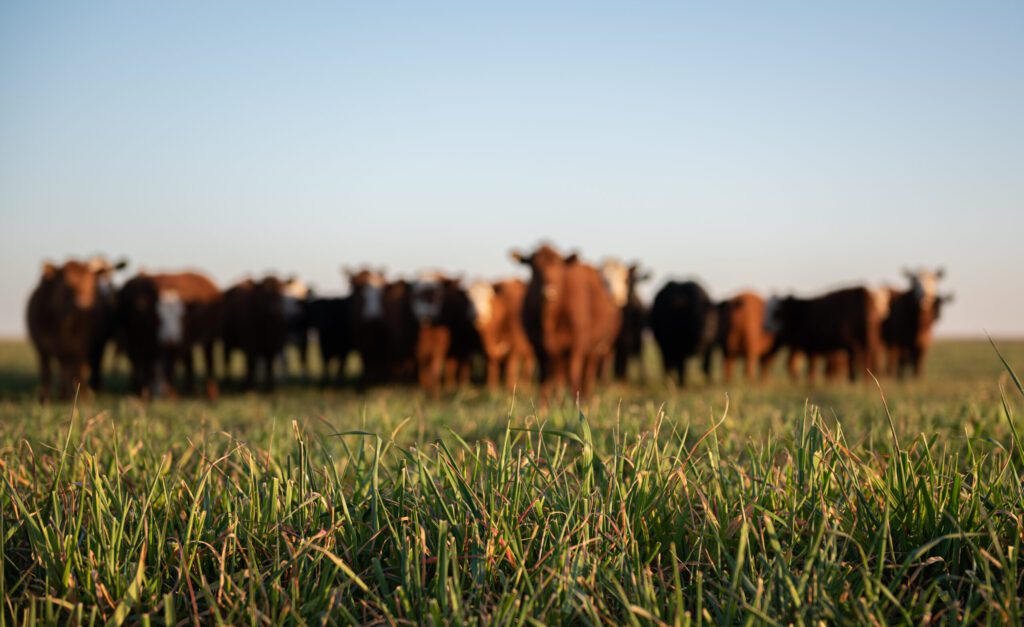Beef Industry Taking Ups and Downs in Stride
by TIM CRAIG
For the Florida livestock industry, it’s been a 13-month crash course on how to survive a pandemic and keep the essential industry operations going — and growing, if possible — in order to do what it does every year: provide quality meat products that the public demands. Now, as things slowly move toward normalcy, the industry sees that it is almost exactly where it was before the pandemic began.
“One thing I will say is that it could be a lot worse,” says Gene Lollis, president of the Florida Cattlemen’s Association. “Every part of the beef industry was affected when COVID hit, it’s affecting basically everyone and it gets to be tough, but that’s just agriculture.”
In January, the USDA released its annual cattle inventory. In the South Region, which includes Alabama, Florida, Georgia, and South Carolina, the total numbers were unchanged with 4.4 million reported cattle and calves. The number has remained relatively consistent for the past six years. Florida reported the highest number of cattle and calves in the region and also showed a 1 percent increase over the 2020 inventory, though that doesn’t necessarily translate to a pickup in the market, according to Dave Tomkow, an owner of the Cattlemen’s Livestock Market in Lakeland.
“As far as the market picking up, it has some, but it’s still not great,” says Tomkow, “but I think that’s happening everywhere.”
Tomkow points to two issues that could be affecting what he sees happening in his market.
The first is the lack of specific labeling of where the meat originates, a practice that stopped in 2015 after Congress repealed the law because of a series of World Trade Organization rulings prohibiting labels based on country of origin on some products, including beef and pork.
“There is a lot of imported meat that comes to the U.S., gets processed here and mixed in with the other meat that gets processed and when it is packaged it can still be called a product of the U.S.,” he says. “Some retail outlets are getting better at specifically identifying where the food originates, and I think labeling would produce more demand on our end.”
The second issue deals with a disparity in the industry that currently favors the packers. Tomkow says the producers are making a strong profit, but their gain isn’t reflected in the other parts of the industry. In its March 31 issue, the Daily Livestock Report calculated that the gross packer margin was $563 per head, more than twice as high as the same week in 2019.
“The packers are on top of the scale and they are making a pretty big profit, but they are giving the producer a lot less,” says Tomkow. “You would think that it would trickle down, but it doesn’t.”
Lollis says he thought the late cold weather that hit the West, limiting the beef supply from that part of the country, would have positively affected the markets here. But it didn’t happen.
“The supply is there,” he says, “it’s just that the calf harvester and those on the finishing end are not making up for it.”
Lollis says that the margins and disparity between the producers and the packers are a part of the naturally shifting landscape that is the cattle industry. While the packers may seem to be at the top of the scale now, it probably won’t be this way forever.
“If you take the cattle industry as a whole, there are three to four large segments that make up the industry, from the cow-calf all the way to the boxed product,” he says. “If you look at how things move through the industry, there has never been a time when all of the segments are generating money at the same rate with the same supply.”
In 2018 and 2019, the beef supply was dipping slightly, says Lollis, but the forecasts were for 2020 and 2021 were for it to come back up.
“But look what happened: The pandemic hit and it affected everyone,” he says. “I don’t like it, but you have to learn to live with the ups and the downs.”
One issue that Lollis is keeping an eye on is the export market. “There is no doubt that exports need to happen,” he says. “We export parts of the livestock that are utilized in other countries that we do not utilize in this country. We have to have solid exports.”
While the market remains consistent, but not overly strong, Lollis maintains a positive attitude about the livestock industry in Florida. Part of that positive attitude stems from the families who have, for generations, been a part of the industry. Part of that attitude also stems from his knowledge of Florida agriculture’s place in the state.
“Florida agriculture is the backbone of the state’s economy year in and year out,” he says. “In any given decade, development will run high for a three- or six-year period, then tourism will run for three to six years, but agriculture stays constant every year. We’ve been doing this for 500 years, ever since the Spaniards first brought cattle to this part of the country. Hopefully, we’ll do it for 500 more.”

